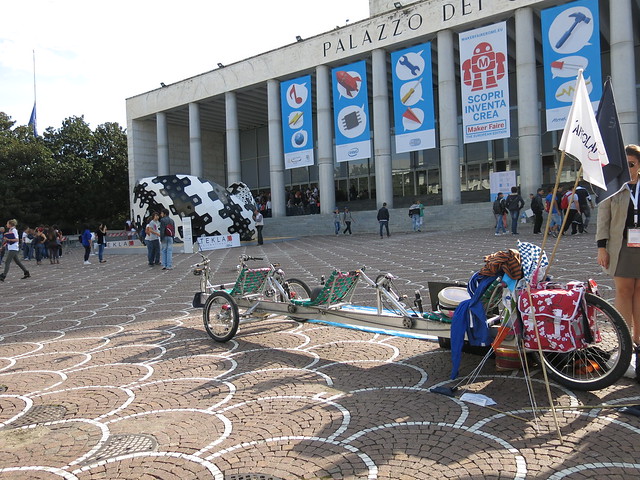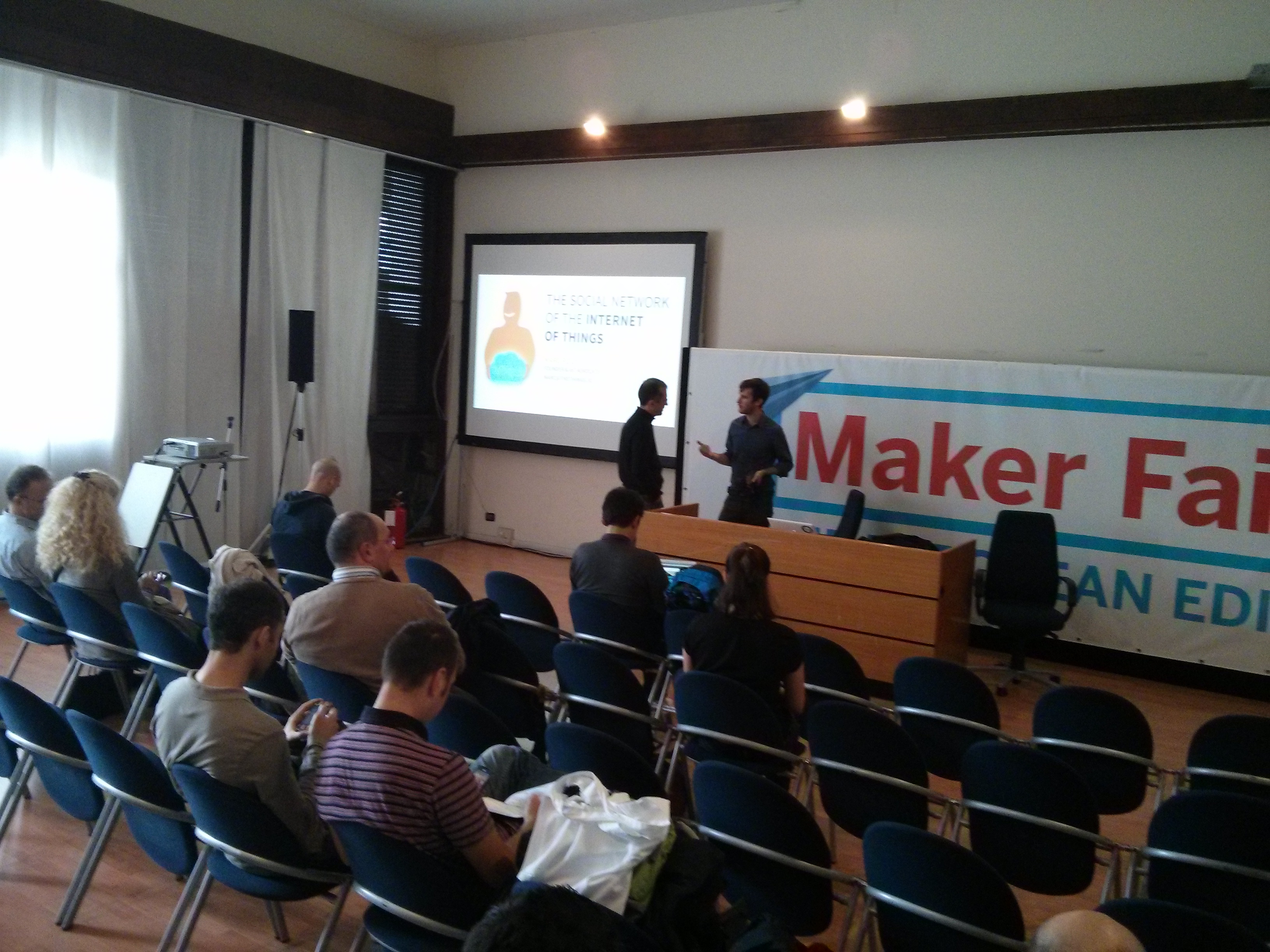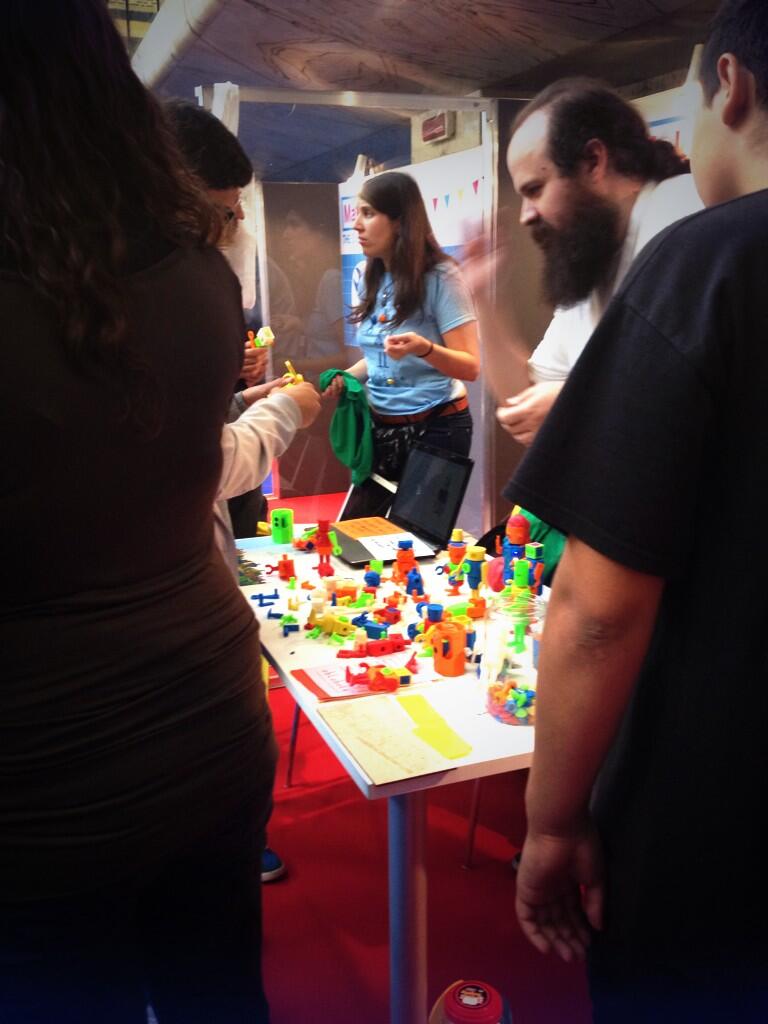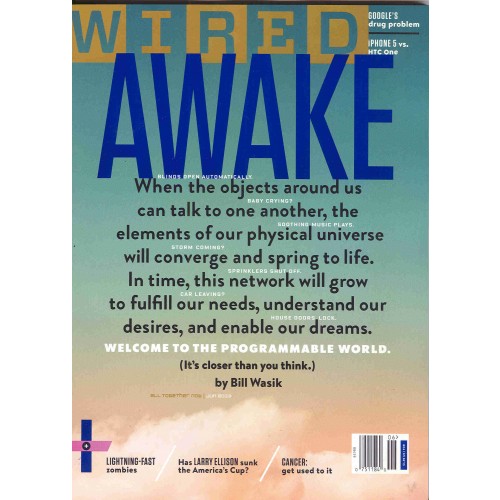Our Experience At The Maker Faire Rome 2013
We’re proud to say that the Maker Faire Rome was a success! We say this not only because the of quality of the projects showed at the Maker Faire, or because of the new Arduino (and non-Arduino, such as the Intel Galileo, thanks!) shields presented and the people going to visit the Maker Faire (more than 30.000), but also because we got to meet a lot of interesting people that were interested thethings.iO and the Internet of Things.
Marc’s goal when speaking was to try to give the audience a clear vision of the current situation of the Internet of Things. At the end of the talk, we gave a coupon to Internet of Things developers. There were several questions after the presentation relating to property of data generated by the gadgets.
We had the opportunity to meet Bruce Sterling. author of the book Shaping Things and writer of the Beyond the beyond at WIRED blog.
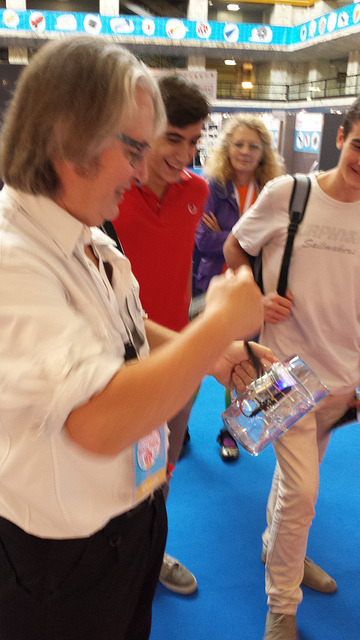
Bruce Sterling with the connected beer of the Oktoberfest of Things
We got to chat with the founders of Arduino, David Cuartielles and Massimo Banzi, about a few of thethings.iO’s projects such as One Seat Away and Oktoberfest of Things, which was shown by Thomas Amberg at the IoT Zurich booth.
We also had the privilege of meeting the Internet of Things Madrid meet up organizers, Sara and César. Their booth consisted of Oblobots,
which are open sourced 3D printed robots’ pieces with a conductive dow that can teach children simple electrical circuits. Children at the Maker Faire were astonished by the Oblobots which were playing and challenging them to make a mega-robot.
A few other interesting groups we had the privilege of meeting were the Cooking Hacks team and Snootlab. The Cooking Hacks team helped us with some questions regarding the next project at the thethings.iO. The Snootlab is a French startup that is building things with technology using Arduino.
We feel very fortunate to have met such amazing and innovative startups, teachers, architects, and makers all who are interested in the future of the Internet of Things. We wish them all the best in their future endeavors.
Don’t forget to follow us on Twitter and be sure to check out our #IoTFriday weekly blog!

